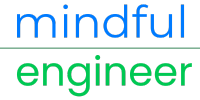Tackling AI Bias – One Prompt at a Time

Introduction
In today’s world of artificial intelligence, AI prompts play an important role in shaping how machines work (think and respond). While prompts guide AI models, they can unintentionally introduce biases in prompts, which often lead to unfair or even harmful outcomes.
In this blog, we’ll explore three key topics: identifying and addressing biases in prompts, ethical guidelines for prompt engineering, and case studies on navigating sensitive topics and ensuring fairness. We’ll break them down in a simple way, showing real-world examples and providing solutions to create better AI systems. By the end, you will be able to create fairer and better AI prompts, minimizing biased prompts.
Identifying and Addressing Biases in Prompts

Bias in AI can come when these AI prompts unknowingly favour certain groups or perspectives over others. Even with the best intentions, subtle biases in AI prompts can lead to biased responses from AI models.
What is Bias in Prompts?
Bias in AI prompts could be intentional or unintentional and it occurs when the input or phrasing of a question shows a particular assumption or perspective, which then leads to unequal treatment in the AI’s response. These biases in prompts can be based on gender, race, culture, socio-economic status, or even political preferences.
Example of Bias in Prompts
For example, you’re using an AI model to generate a job application for a software engineering role. You might prompt the model with: “Write a job application for a highly qualified engineer who has a long history in tech leadership.” While this seems neutral, it might unknowingly introduce biases in prompts leading to a male-centric or Western-centric response due to historical data the model was trained on. This is bias in action.
How to Identify Bias in Prompts
One of the first steps in addressing biases is learning to spot them. Here’s how you can identify bias in AI prompts:
- Evaluate the Wording: Look at the specific words used in the prompt. Are they leading the model towards a particular stereotype? For instance, asking for a “successful entrepreneur” might lead to results biased towards certain regions or genders.
- Test with Multiple Inputs: Run the same prompt across different scenarios, genders, or cultural contexts. Do the results change based on subtle shifts? If they do, biases in prompts are present.
Addressing Bias in Prompts
Once you’ve identified bias, it’s crucial to address it. Here’s how:
- Neutral Phrasing: Ensure your prompts are phrased neutrally and don’t lean towards specific assumptions. Use terms that are inclusive of all people and contexts.
- Contextual Awareness: Use context-aware prompting by providing the AI with background on fairness, diversity, and inclusion. For example, prompt the AI to consider multiple perspectives before generating a response.

Ethical Guidelines for Prompt Engineering

As we dive deeper into the world of prompt engineering, it’s important to discuss ethical considerations. AI systems have the power to shape decisions and affect people’s lives, making ethics a top priority. Ethical guidelines in prompt engineering are about ensuring fairness, transparency, and inclusivity in every prompt we design.
Why Ethics Matter in Prompt Engineering?
Prompts dictate how AI models generate outputs, meaning the consequences of unethical prompting can be far-reaching. Whether you’re designing a chatbot, a search engine, or an AI assistant, an unethical prompt can perpetuate discrimination, spread misinformation, or result in harmful consequences.
Ethical Guidelines to Follow
Here are some key ethical guidelines to keep in mind when crafting AI prompts:
- Inclusivity: Ensure prompts do not exclude or marginalize any group. For example, when asking an AI model to generate content, make sure the input is reflective of a broad, diverse audience.
- Avoiding Harm: Prompts should not lead to responses that perpetuate harm, including misinformation, stereotypes, or hate speech. It’s important to design prompts that promote kindness, fairness, and accuracy.
- Transparency: It’s crucial to let users know when they’re interacting with an AI system and explain the role of the prompt in shaping the conversation. Transparency builds trust in AI.
Example:
For instance, you’re creating a prompt for an AI system that provides health advice. An unethical prompt might be: “Suggest the quickest and cheapest way to lose weight.” This could lead to unhealthy or dangerous responses. Instead, an ethical prompt would be: “Suggest healthy, sustainable lifestyle changes for weight management.”
Ethical Considerations
Let’s say you’re hosting a dinner party. You wouldn’t serve a dish to your guests without considering their dietary needs or preferences, right? In the same way, ethical prompting means considering the diverse needs and backgrounds of the people interacting with AI.
Case Studies: Navigating Sensitive Topics and Ensuring Fairness
To better understand how to implement ethical guidelines and address biases, let’s look at a few real-world case studies. These examples will show how prompt engineering can be applied to navigate sensitive topics and ensure fairness in AI responses.
Case Study 1: AI Moderation in Social Media
Social media platforms use AI models to moderate content. However, bias can creep in when prompts guide the AI to flag certain posts. For example, if the prompt is designed to detect offensive language without considering cultural context, it may disproportionately flag posts from specific regions or languages as inappropriate.
Solution
To ensure fairness, the prompts used in moderation systems need to be carefully crafted to account for different cultural norms. For example, instead of flagging words based solely on a blacklist, the prompt could ask the AI to consider the context of the conversation before making a moderation decision.
Case Study 2: Hiring Platforms
Some AI-driven hiring platforms use prompts to evaluate candidate resumes. In one instance, the prompt was designed to prioritize candidates with “strong leadership experience.” This led to bias against women, as the AI favoured candidates from industries and regions historically dominated by men.
Solution
To address this, the prompt was re-engineered to focus on diverse definitions of leadership, considering various types of leadership experience across different sectors and backgrounds.
Navigating Sensitive Topics
It’s like driving in an unfamiliar city. If you follow a GPS that only shows the main roads, you might miss important landmarks or get stuck in traffic. But if the GPS is context-aware and shows alternate routes based on real-time data, your journey is smoother and more inclusive. In the same manner, prompt engineering needs to be aware of diverse contexts and sensitive topics to ensure fairness in AI responses.
Conclusion
Prompt engineering is a powerful tool, but with great power comes great responsibility. By identifying and addressing biases in AI prompts, following ethical guidelines, and learning from real-world case studies, we can create AI systems that are fair, transparent, and inclusive. The goal is to ensure that AI benefits everyone, regardless of their background or identity. As we continue to explore AI’s potential, let’s prioritize fairness, inclusivity, and ethics in every prompt we design.
Quiz Time!
Which of the following is an ethical guideline for prompt engineering?
- Avoiding harm and promoting inclusivity.
- Prioritizing efficiency over fairness.
- Using ambiguous language to encourage diverse responses.
Follow our LinkedIn page for never-ending AI and Tech updates!






